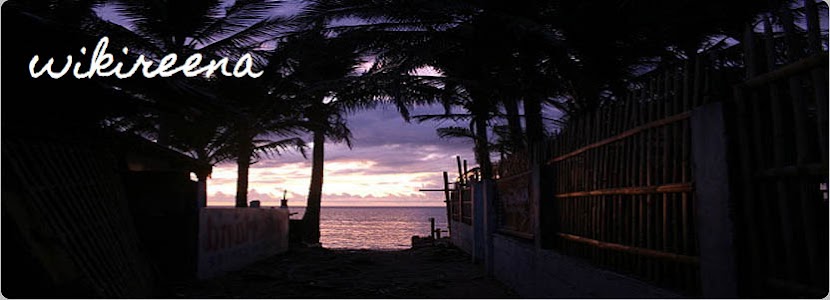When I was 9, I
collected Lisa Frank stickers (and other designs of course). I remember that
being the spark of my fascination for dolphins. My sister also liked dolphins,
and because of this, we got hold of a book; a directory actually, of the kinds of
whales and dolphins in the Philippines and where they can be found. Ever since,
I've had on my mental bucket list that I must 1.) see dolphins in the wild and
2.) if possible swim with a dolphin.
 |
| A fisherman/watcher and a pair of spinner dolphins |
Fast forward to
2009, I was a wink away to crossing one more item off my bucket list.
Last, but
definitely not the least on our Puerto Princesa itinerary was dolphin watching
in Puerto Princesa Bay. Our tour van picked us up from our hotel at 7 am to
bring us to the Port of Palawan. Even while we were still in the van, I was
already praying really hard there would be a sighting. As soon as we arrived,
we boarded the outrigger boat along with another group. Along the trip out to
the deep blue sea, we learned that they were a group of teachers who also went
on vacation before school started.
We were given a
briefing by the accredited guide, and gave us a few reasonable reminders and
rules – to not feed and not swim with the dolphins isn't too difficult to
follow, right? After about an hour, we saw a smaller boat and initially thought
the "boat boss" was a fisherman. He then pointed to a direction, and
there we went. We later on figured he was a watcher. After about 5 minutes, lo
and behold! We got our first glimpse of Palawan's dolphins. We were all
ecstatic at the sight of the large school of dolphins jumping around, spinning
in mid air as if showing off their skills and tricks to us humans.
 |
| Dolphins swimming freely in the open sea |
 |
| Some of the last few groups we saw before heading back to the Puerto Princesa Port |
We were out at
sea for almost two hours seeing mostly spinner dolphins, roaming around,
following directions from watchers, possibly even going around in circles and
making criss-crossed paths with the other boats set to get a glimpse of these
amazing creatures. I didn't get a chance to get close-up photos because the
boats weren't allowed to intersect the path of the dolphins and the dolphins
didn't go near the boat either. During the only instance the dolphins came very
close to the boat, I was too shocked with the sight to even snap away.
 |
| Just some of the possibly hundreds of dolphins we saw that morning |
Puerto Princesa Bay
is conveniently located just right beside Honda Bay so you can actually do
dolphin watching in the morning then proceed to Honda Bay Island hopping after.
This trip made me
realize how great He really is, and how we humans are but one fraction of the
earth's inhabitants. This trip also made me realize that there are even more
places in the Philippines for us to discover.
I didn’t “leave my
heart in Palawan”. Rather, I took home with me a happier heart and a mind at
peace and filled with memories to last a lifetime.
 |
| Flora at Daluyon |










































